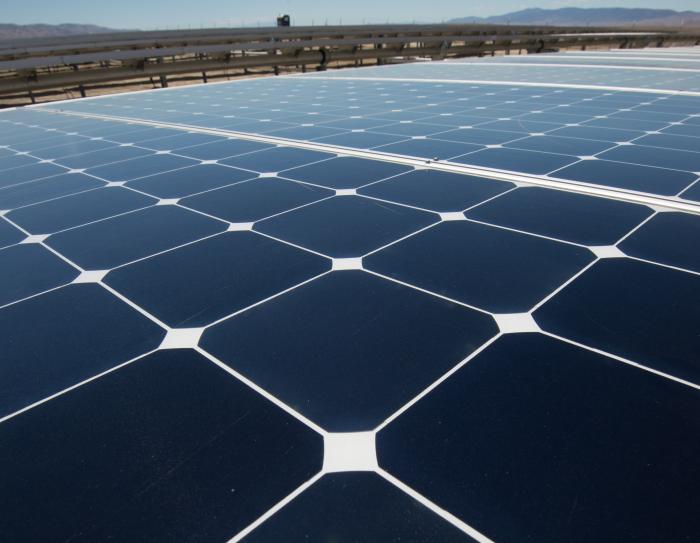Is the Tesla Powerwall 2 worth it now that it’s optimized for time-of-use rate plans?

The Tesla Powerwall 2 home battery system is an incredible piece of technology. Is it also a smart financial investment? If your local utility offers a “time-of-use” rate plan, the Tesla Powerwall 2 might be a stellar investment — thanks to a Powerwall 2 software update released by Tesla in May 2018. Before we get into that, let’s quickly consider the original reasons to buy a Tesla Powerwall battery.
Why did people buy a Powerwall before Tesla’s big software update?
If the grid goes down, the Powerwall can keep your home powered for several hours or even several days (depending on your energy usage). By selecting “backup” mode, the Powerwall will stay fully charged at all times…waiting for its opportunity to take over when the electric grid putters out.
Alternatively, the Powerwall can be paired with a solar energy system. If the solar system produces more than the home can use at any given time, the Powerwall will store the excess solar energy (up to its total 14 kW capacity). If the solar system produces less than the home can use, the Powerwall will power the home (so no energy will come from the electric grid).
Using more of your solar energy on site can be satisfying, but it doesn’t make financial sense for most Americans. This is because most utilities will give the solar homeowner a full credit (or almost full credit) for each excess solar kWh (this is called “net energy metering”). In other words, the utility acts as a 100% efficient battery!
To learn more about these Powerwall features and the Powerwall generally, check out this article: Is the Tesla Powerwall 2 worth buying and how does it compare to other energy storage solutions?
Enter Tesla’s May 2018 Powerwall 2 software update
Based on our survey of 90 major utilities around the country, 60% of major utilities offer “time-of-use” rate plans to homeowners. With time of use, you pay a higher rate for electricity during the high-demand hours (when it’s harder for the utility to provide electricity), and a discounted rate during other hours. In other words, the utility is giving you an incentive to help them manage the grid better.
To save more money under a time-of-use rate plan, you could do more of your energy-related activities during the discounted off-peak window. For example, you could wait to start the dishwasher until the off-peak window starts. While that might work fine for some, others would rather not think about it (because life is complicated enough).
Thanks to Tesla’s Powerwall 2 update, you can have your cake and eat it too. For example, you could continue running your dishwasher during the peak window because that’s when it’s convenient. Under the Powerwall 2’s new “time-based control” mode, the Powerwall 2 will supply the power to run the dishwasher (so you aren’t pulling down grid electricity during the expensive peak time). The Powerwall 2 will then re-charge itself during the discounted off-peak window (when grid electricity is cheap).
To set this up in the Powerwall 2’s phone app, select the “time-based control mode” and indicate the start hour and end hour of your time-of-use rate plan’s peak time (for example, 3pm to 8pm). Then the Powerwall 2 will go to work saving you money by maximizing the portion of discounted off-peak electricity used by your home.
To see if a time-of-use rate plan is offered by your utility, check out the CutMyBill calculator.
Is the electric bill savings worth the Powerwall 2 cost?
A well-reviewed local energy professional can get you a solid bill-savings estimate, accounting for your specific electric rates, energy usage pattern, etc. This article will get you an initial idea of whether the Powerwall 2 is worth it.
How much does it cost?
Electric bill savings doesn’t mean much unless we compare it to the Powerwall 2’s cost.
The Powerwall 2’s list price is $5,900 (as of August 2018). Let’s add $2,100 for supporting hardware and installation (this varies). This gets us to a grand total of $8,000. The Powerwall warranty guarantees that it will be able to store at least 70% of its original capacity 10 years out. Let’s be conservative and assume a 10-year system lifetime.
Are any incentives available?
Alas, energy-storage incentives aren’t (yet?) available in most states. California is an exception, with the well-funded Self Generation Incentive Program (SGIP). Under this program, a Powerwall 2 could qualify for a whopping $4,200 rebate (or 14kW Powerwall capacity times $300 per kw — the total rebate depends on the rebate “step” your utility is in at the time you have the Powerwall 2 installed).
If you also get a solar energy system, the Powerwall 2 could qualify for a 30% federal tax credit. The catch is that all energy going into the Powerwall 2 has to come from the solar energy system (or a high percentage, with a pro-rated tax credit). With utilities generally shifting expensive time-of-use peak windows into the evening, the Powerwall 2 in “time-based control” mode probably wouldn’t qualify for the federal tax credit.
Let’s consider one scenario outside California ($8,000 cost with no incentive) and one scenario in California ($3,800 net cost with the SGIP incentive).
What’s the difference between the peak and off-peak rate?
With “time-based control” mode, the Powerwall’s job is to shift peak usage into the off-peak window. This strategy isn’t worth it if the peak rate is barely higher than the off-peak rate (e.g. under Maryland PEPCO’s R-TM rate plan, there’s only a third-of-a-penny difference between the off-peak rate and peak rate).
Looking at summer rates for the 90 major utilities we surveyed, the average off-peak rate outside California is 9¢ and the average peak rate is 21¢ — a 12¢ difference. In California, the average off-peak rate is 18¢ and the average peak rate is 33¢ — a 15¢ difference.
What’s the cost to store/discharge a Powerwall kWh?
For a quick initial analysis, we could simply compare the off-peak rate / peak rate differential with the average Powerwall cost per kWh (over 10 years). To simplify, we’re applying summer-season data to the entire year.
Recall that outside California, we’re assuming an $8,000 total Powerwall 2 cost. Across the surveyed utilities, our estimated average weekday peak-time usage is 13 kWh (about a third of the daily 42 kWhs used). 260 weekdays per year times 10 years is 2,600 total weekdays (weekends are typically 100% off peak). Multiplied by 13 kWh used in peak is about 34,000 kWh. So let’s assume the Powerwall is storing and discharging a total of 34,000 kWh over 10 years (which, by the way, is 90% of the maximum permitted under the Powerwall’s warranty). In other words, we’re never pulling electricity from the grid during the expensive peak time. Dividing the total Powerwall 2 cost ($8,000) by 34,000 kWh stored/discharged gets us to 23¢ per kWh.
In California, the average cost per kWh stored/discharged is 24¢ ($3,800 net Powerwall cost divided by 15,600 kWh stored/discharged over 10 years…assuming 6 out of 31 kWh used on a typical weekday occur during peak).
What’s the verdict?
Looking at average rates and typical usage estimates, the Powerwall 2 isn’t a good investment under the “time-based control” mode. Outside California, the average off-peak/peak rate differential is 12¢ while the average Powerwall cost per kWh is 23¢. In California, the average off-peak/peak rate differential is 15¢ while the average Powerwall cost per kWh is 24¢.
A caveat is that we haven’t accounted for electric rate increases over time. On the other hand, we also haven’t accounted for the Powerwall 2’s unavoidable energy loss — for every kWh stored, expect to get about 90% of a kWh back (so called “roundtrip efficiency”).
Your specific situation could be very different — off-peak/peak rates differ by as much as 44¢ outside California and 36¢ in California. The Powerwall 2 is a solid investment in these cases.
And it’s a different investment entirely when solar is involved — you could shift some or all of the excess solar production from the off-peak window to the peak window…getting more value out of both your solar energy system and your Powerwall 2 (let alone that 30% federal tax credit for solar and the Powerwall 2).
At the end of the day, we suggest you get a few free quotes for both a standalone Powerwall 2 battery system and a Powerwall + solar energy system combination. Quotes from well-reviewed installation companies will account for your specific data and will get you a clear picture of this unique investment opportunity. You can quickly find and connect with reputable installers at SolarReviews.com, which hosts the largest online collection of installer reviews.
Latest Blog Posts

Alameda: Synergy768 Office of the Day

Is the Tesla Powerwall 2 worth it now that it’s optimized for time-of-use rate plans?
The Tesla Powerwall 2 home battery system is an incredible piece of technology. Is it also a smart financial investment? If your local utility offers a “time-of-use” rate plan, the Tesla Powerwall 2 might be a stellar investment — thanks to a Powerwall 2 software update released by Tesla in May 2018. Before we get

Why Solar Cell Efficiency Matters
Solar Technology Efficiency: More Breakthroughs are Coming When Bell Labs unveiled the world’s first silicon solar cell in 1954, it was estimated that the company’s new invention could turn 6 percent of the sun’s energy into electricity — a concept commonly referred to as efficiency. Fast forward to 1999. After nearly half a century of
Changing the way to power your homes.
Our commitment to quality is unrivaled because we take pride in every panel and battery we install. We’re not trying to be the biggest, that’s why we only offer and install the very best.
When only the best will do, Contact Synergy 768!
 9000 Brentwood Blvd, Ste A, Brentwood, CA 94513
9000 Brentwood Blvd, Ste A, Brentwood, CA 94513 (925) 308-9177
(925) 308-9177 operations@synergy768.com
operations@synergy768.com


